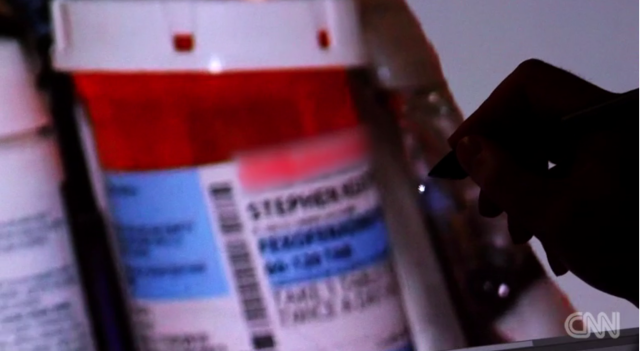
On Thursday, a CNN report showed exactly how a major 2013 online child sexual abuse bust went down. The case's breakthrough came from the kind of photo manipulation that happens on TV crime dramas, in which a horribly blurry photo is somehow magically "enhanced."
Homeland Security Investigations special agent Jim Cole showed CNN how a blurry photo of a bottle of prescription pills led to the 110-year conviction of Georgia sexual predator Stephen Keating. Though CNN described the analysis as "game-changing," the tools used to confirm the suspect appear to be relatively common.
In 2012, photos recovered from a computer by Danish investigators was handed off to the HSI's Cyber Crimes Center. Cole demonstrated that filters built into Adobe Photoshop were used to sharpen the text on a bottle—which was visible because a victim was photographed in front of a bathroom cabinet—to confirm a first name, the first two letters of a surname, and the beginning of a code for a prescription type.
Another recovered image from the same photoshoot included a grown man's fingers. Cole's office boosted the contrast in that image before running the visible fingerprints through a federal fingerprint database until they found a match for a Stephen whose surname began with "Ke"—who had also been linked to the assumed prescription seen in the first photo.
The CNN video hints at other computer programs used in the HSI's investigations, including a photo-matrix display that shows a circular arrangement of photo thumbnails—possibly to triangulate common elements in faces and other details—and an audio spectral analysis program, likely used to compare voices in various cases and isolate possible audio clues. However, the CNN report was wholly lacking in names of programs or software vendors involved in such cases—and it even named the major PhotoDNA initiative without giving credit to its creators at Microsoft.
reader comments
73